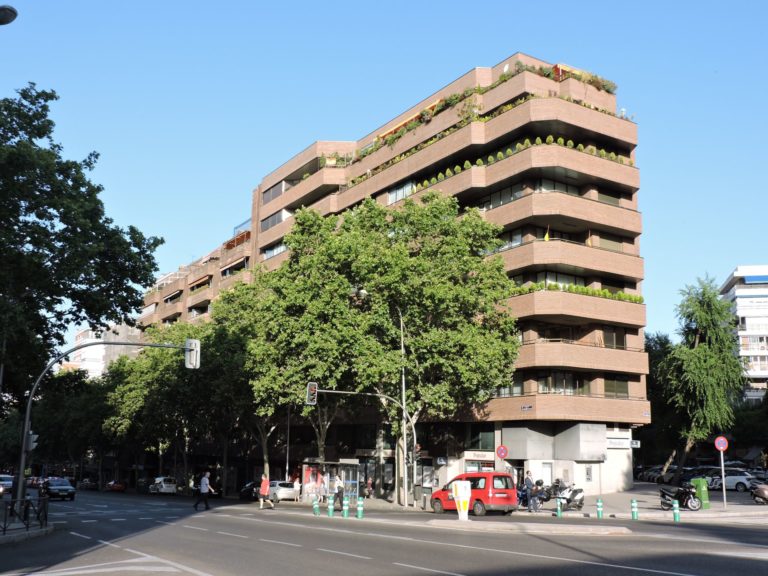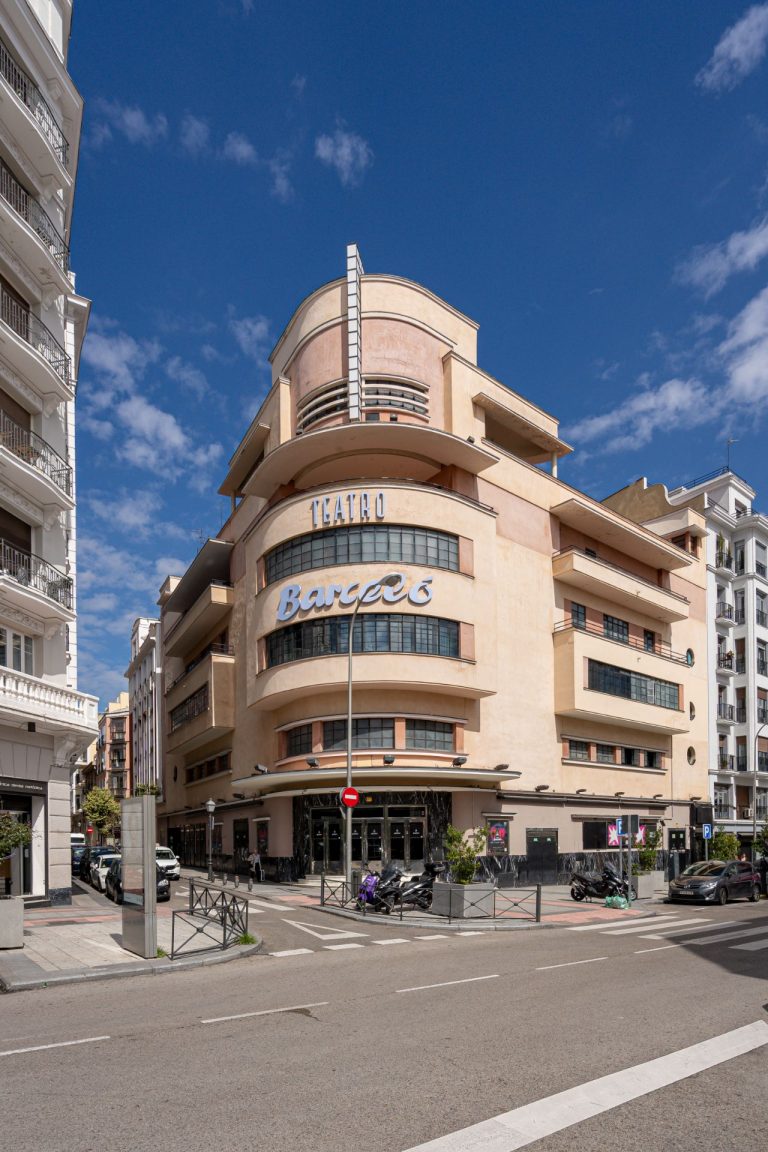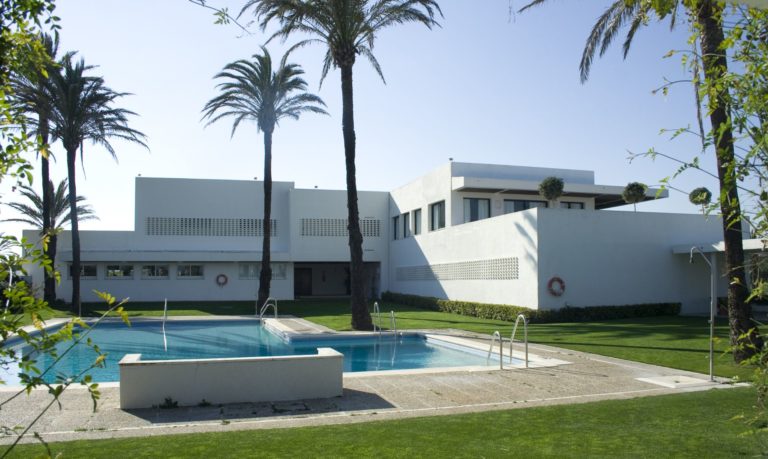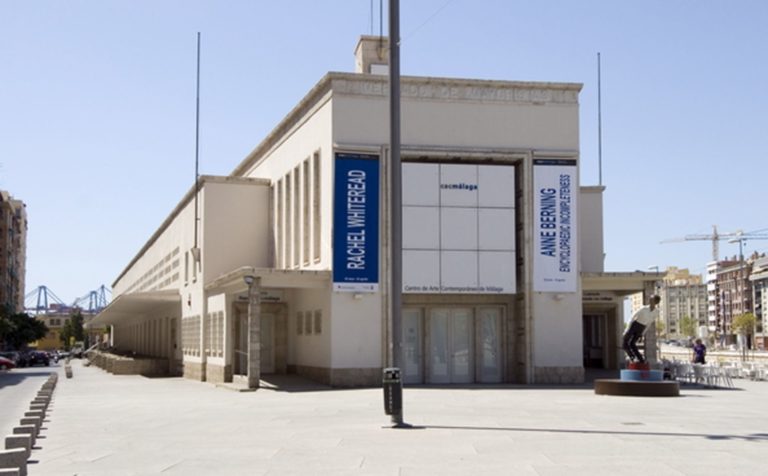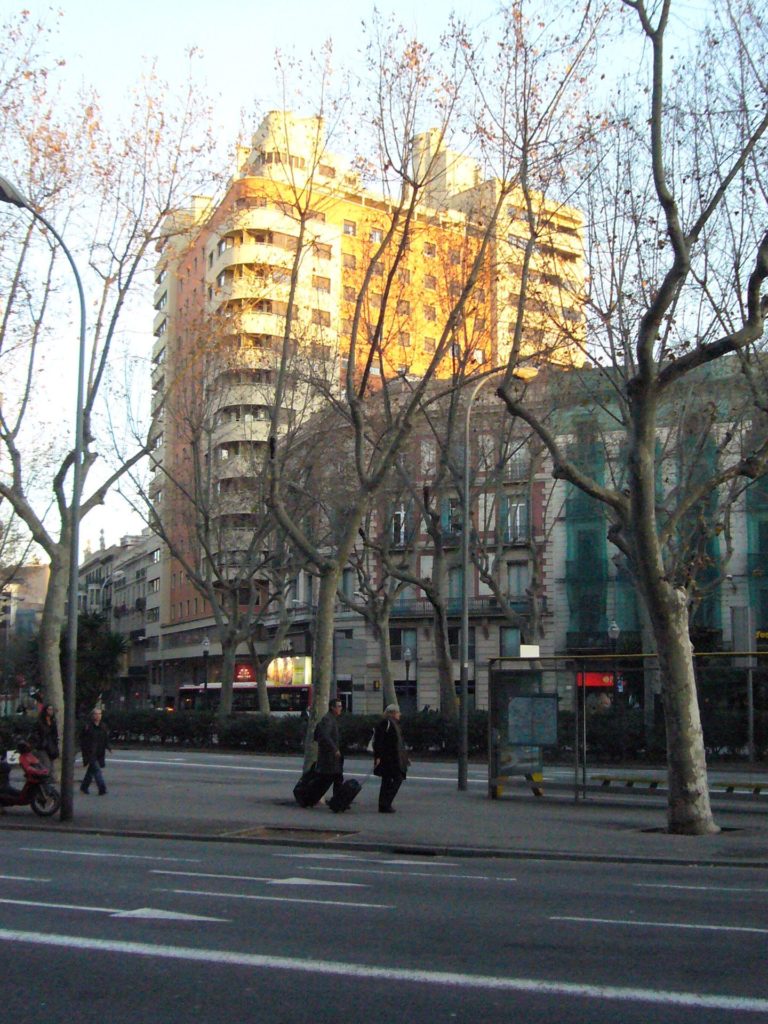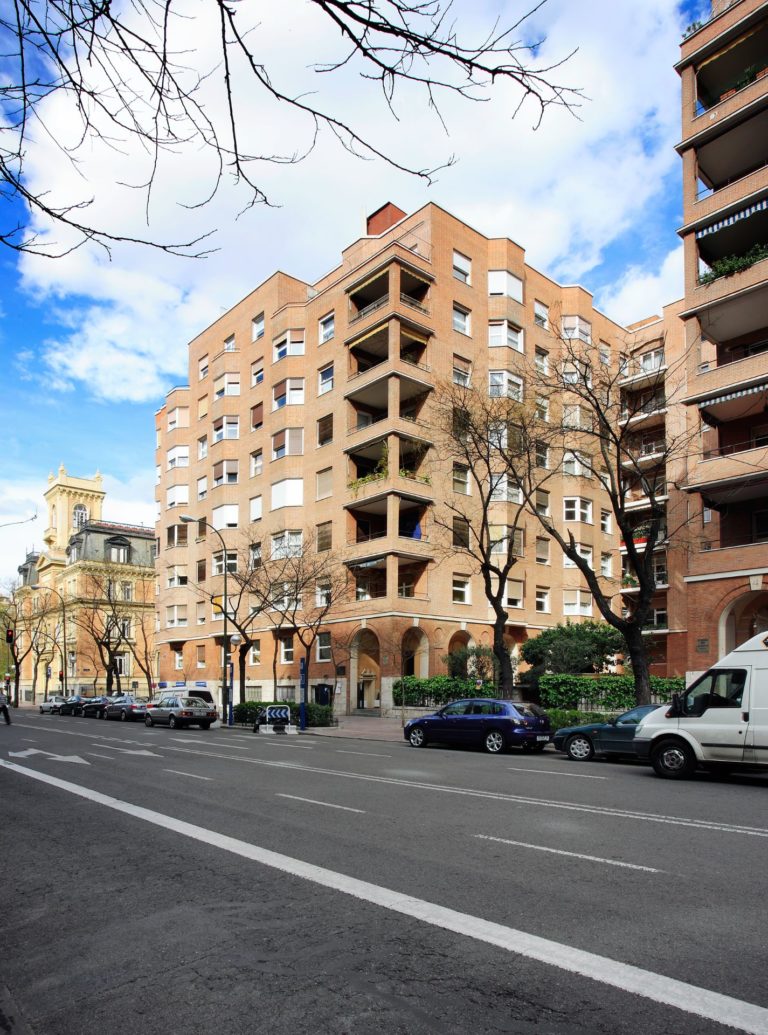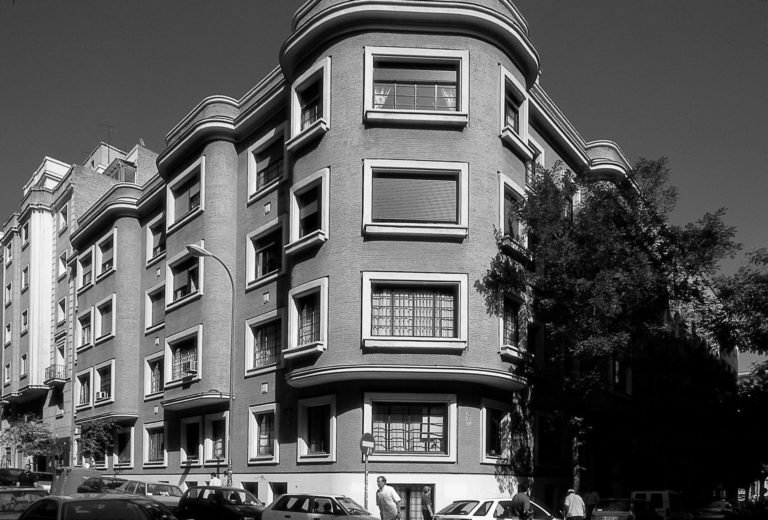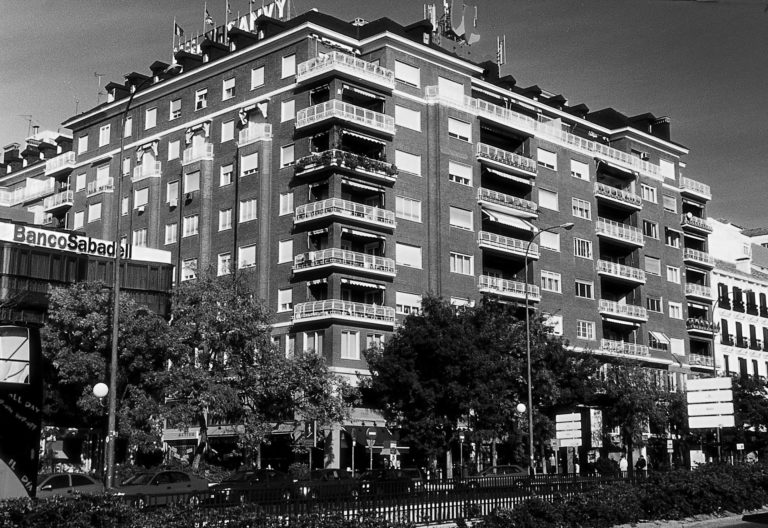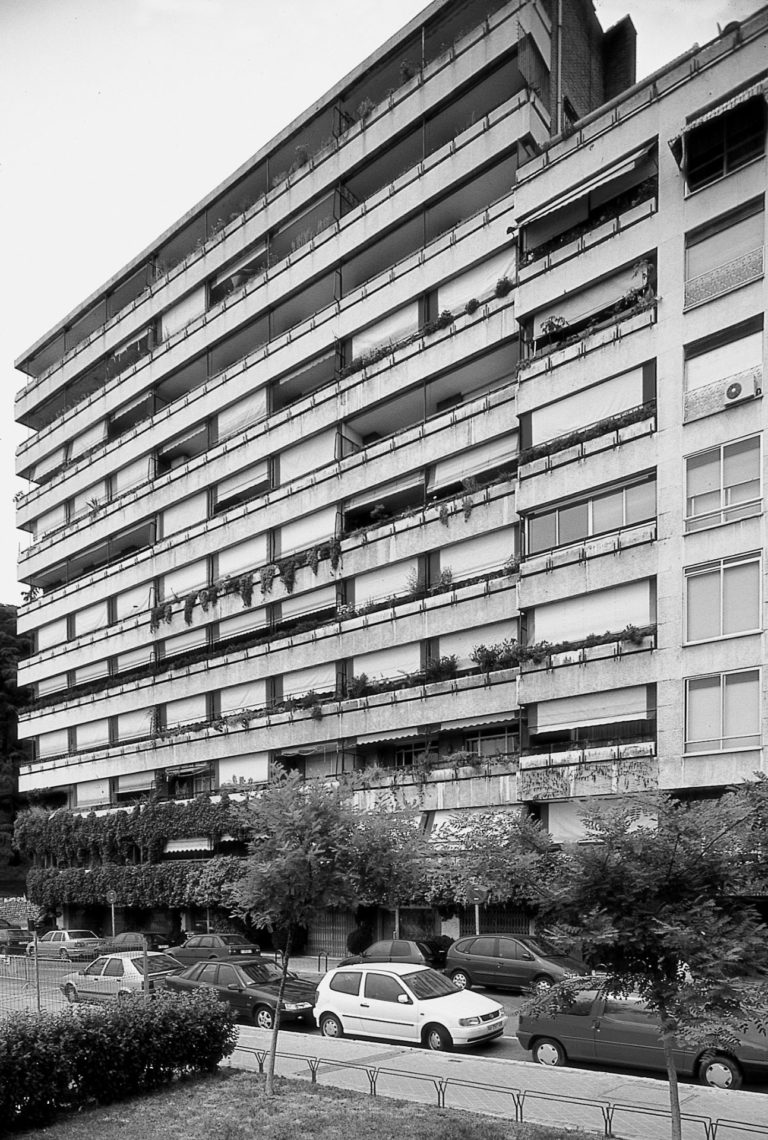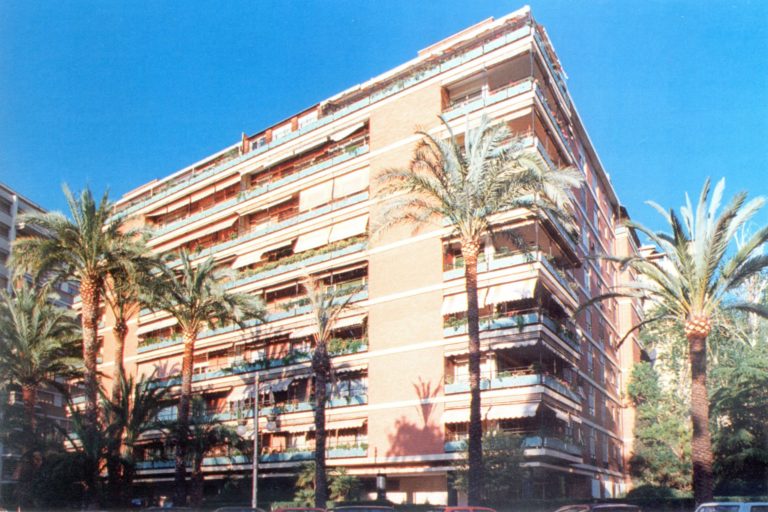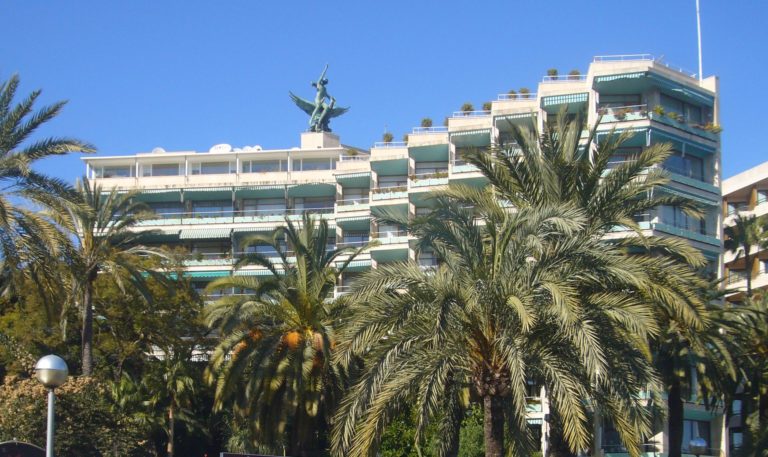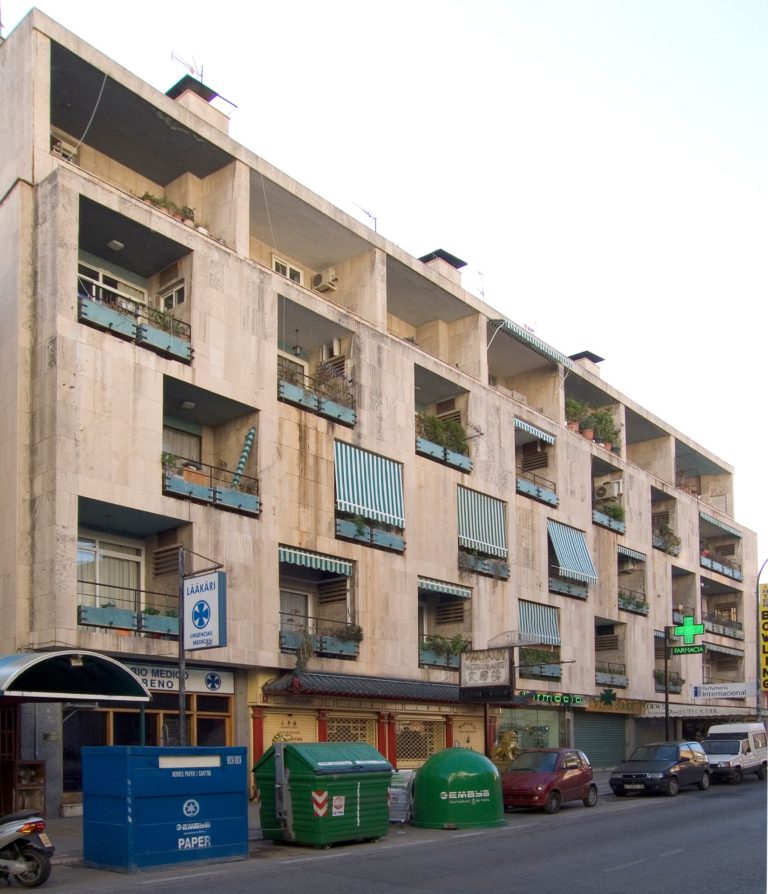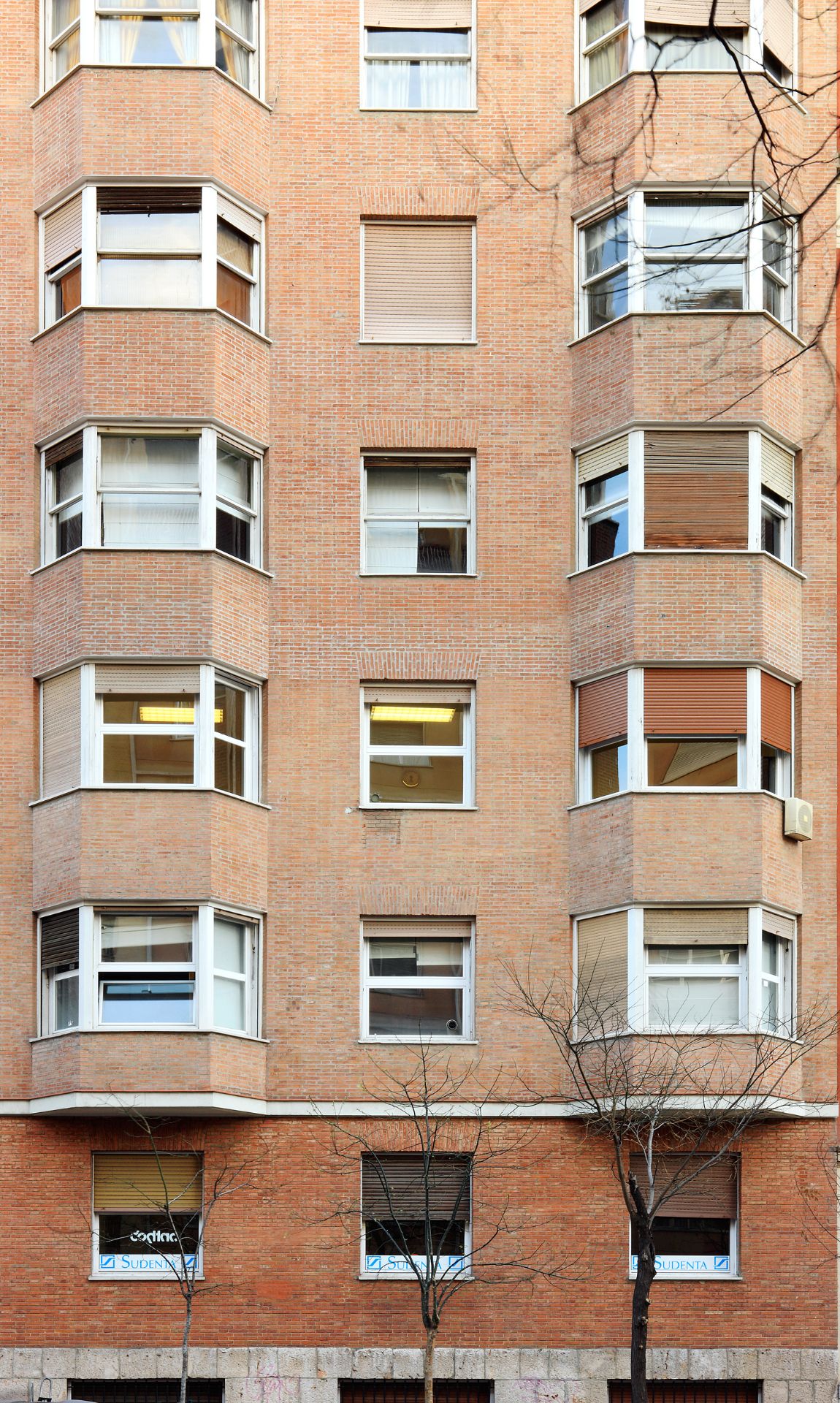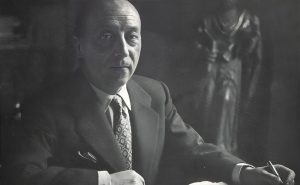
Luis Gutiérrez Soto
Madrid, 1900-1977
Luís Gutiérrez Soto’s father was a civil engineer from Biscay, while his mother was from Burgos and the daughter of Grandees of Spain. His childhood was spent between Madrid and El Escorial, where he attended secondary school while also studying at an academy in preparation for his architecture studies. As he recalled, his contact during those years with the Royal Monastery of San Lorenzo de El Escorial and the imperial architecture of the House of Austria was decisive and a point of reference that he returned to directly in his work from the late 1930s, such as the Ministry of the Air in Puerta de Hierro (Madrid).
As a teenager and a young man he was known as a great football player, and he eventually played on the first team for Atlético de Madrid, where he was given the nickname “pichichi”. His interest in sports remained a constant, to the extent that he was one of the three founders of the “Club de Campo” sports club in Madrid, for which he designed the headquarters in 1931 ─ on a plot of land donated by King Alfonso XIII ─ together with the architect José Antonio Domínguez Salazar.
Despite his resolve to become an architect, his academic performance was not particularly brilliant, and he was even forced out of the programme for having taken the same drawing class four times without managing to pass. After leaving architecture and enrolling in Naval Engineering, he was ultimately readmitted, finally earning his degree in 1923. His time at the Madrid School of Architecture was not easy on a personal level either: his family was bankrupted by failed investments, and the aspiring architect was obliged to work as a window dresser and a painter of fans and furniture to pay for his studies.
In the early years of his professional career, he was a collaborator in the studio of Modesto López Otero, and at the same time he took a series of study trips that brought him into contact with Le Corbusier ─ despite not being enthused by his work ─ Otto Wagner, Bruno Taut, Josef Hoffman, and Hans Poelzig. His initial influences were heterodox, even contradictory in some cases. Looking only at the spaces for film screenings ─ one of the most common typologies in the work from his early years – he produced decidedly art deco buildings like the Callao Cinema ─ after a trip to Paris in 1925 ─ expressionistic designs like the Cine Europa – clearly influenced by Mendelssohn ─ or rationalist examples like the Cine Barceló.
In his own words, his interest in architectural rationalism came more from the influence of the “restrained” designs by Modesto López Otero and Secundino Suazo than from an ideological or aesthetic conviction. And yet, throughout the 1930s he continued to develop work that fell well within a rationalist style – or, at least, within tendencies that could were comparable to the modern architecture of the moment.
His enormous production in the city of Madrid makes him one of the architects whose work had the most influence on the development of the capital throughout the 20th century, both for the more than 400 works he built in the city and for the ability of that work to cement a style that was embraced by many of his professional colleagues. The bulk of this production came in the form of commissions from large private construction companies, for which he built numerous residential buildings. It is worth highlighting the one he built for the Miguel Ángel real estate company on the street of the same name in Madrid. Gutierrez Soto introduced an open courtyard facing the street to improve the living conditions in the homes amid the dense construction of Madrid’s Ensanches, a solution that was later adopted by other architects and repeated in many neighbourhoods around the capital. In these private commissions, the client’s taste clearly influenced stylistic decisions, which led to the introduction of classicist elements in compositions that were initially more devoid of decorative elements. Despite all this, the architect’s personal touch always shone through in his residential projects, with a style that shied away from avant-garde fashions and trends, and which became known popularly as the “Gutiérrez Soto style.” Neighbourhoods like Salamanca and Chamberí and streets like Paseo Castellana and Paseo Pintor Rosales became characterized by his designs and those of his followers.
Throughout his career, he built buildings for practically every imaginable use, responding to programmes that ran the gamut from the orphanage of Nuestra Señora de las Mercedes to the parish church and convent of Santa Maria del Monte Carmelo and the Barajas airport. The experience he amassed in designing the Madrid airport served him during the Spanish Civil War, when he enlisted and served as a commander in the Air Force and helped build military airfields for the Nationalists. At the end of the war he was commissioned to build the headquarters for the Army in which he had served in Madrid, with direct counsel from Hermann Göering and other members of the Luftwaffe of Nazi Germany. He also made major contributions to interior design, with Hollywood-style venues like Chicote and Casablanca that had an enormous influence on the imagery of Madrid’s nightlife.
While he was always independent and little inclined toward collective pursuits, Carlos Flores included him within the group that he defined as the Generation of ‘25, referring to a group of avant-garde architects who earned their degrees in Madrid between 1918 and 1925. This included Luis Blanco Soler, Rafael Bergamín, Casto Fernández Shaw, Miguel de los Santos, Agustín Aguirre, Manuel Sánchez Arcas, José Borobio, José de Aspíroz, Manuel Muñoz Casayús, Luis Lacasa, Fernando García Mercadal, Carlos Arniches and Martín Domínguez, and the Barcelona native Raimon Duran i Reynals.
The architect Miguel Ángel Balldelou was put in charge of organizing the architect’s archive after his death in 1977, inventorying more than 650 projects. Following this effort, Baldellou served as the curator of a large anthological exhibition on Gutierrez Soto in the Arquerías de Nuevos Ministerios, 20 years after his death. It is surprising that, today, there is still no recent catalogue or monograph covering his complete work to help communicate to future generations the importance of his work in defining the urban landscape of Madrid.
Biography by Roger Subirà
Bibliography
- URRUTIA NÚÑEZ, Ángel, “Luis Gutiérrez Soto (1900-1977): arquitectura de los años 20-30”, in AA VV, Arquitectura española: siglo XX, Cátedra, Madrid, 1997, pp. 321-326.
- BALLDELOU, Miguel Ángel, “El Madrid de Gutierrez Soto”, in Arquitectura 312, 1997, pp. 84-90.
- AA VV, La Obra de Luis Gutiérrez Soto, COAM, Madrid, 1978.
- PEÑA GANCHEGUI, Luis, “Ha muerto el régimen de Franco y ha muerto Luis Gutiérrez Soto”, in Arquitecturas bis 19, noviembre de 1977, p. 31.
- BALLDELOU, Miguel Ángel, Luis Gutiérrez Soto, artistas españoles contemporáneos, Ministerio de Educación y Ciencia, Madrid, 1973.
- “20 preguntas a Luis Gutiérrez Soto”, in Hogar y Arquitectura 92, January-February 1971, pp. 153-158,
- “Cronología esencial, vida de Gutiérrez Soto”, in Hogar y Arquitectura 92, January-February 1971, p. 144-152.
- “Aeropuerto Nacional de Madrid-Barajas”, in Hogar y Arquitectura 92, January-February 1971, p. 112-113.
- FLORES LÓPEZ, Carlos, “Gutiérrez Soto y el estilo Gutiérrez Soto”, in Hogar y Arquitectura 92, January-February 1971, p. 10-13.
- Biography in IEM Instituto de Estudios Madrileños (online):
- MARTITEGUI SUSUNAGA, Jesús, “Rueda de preguntas al arquitecto Luis Gutiérrez Soto sobre Madrid en su relación con la arquitectura”, in Temas de Arquitectura 32, 1968, pp. 6-13.
- “Preguntas a Luis Gutiérrez Soto”, in Arquitectura 37, January 1962, pp. 23-28.


